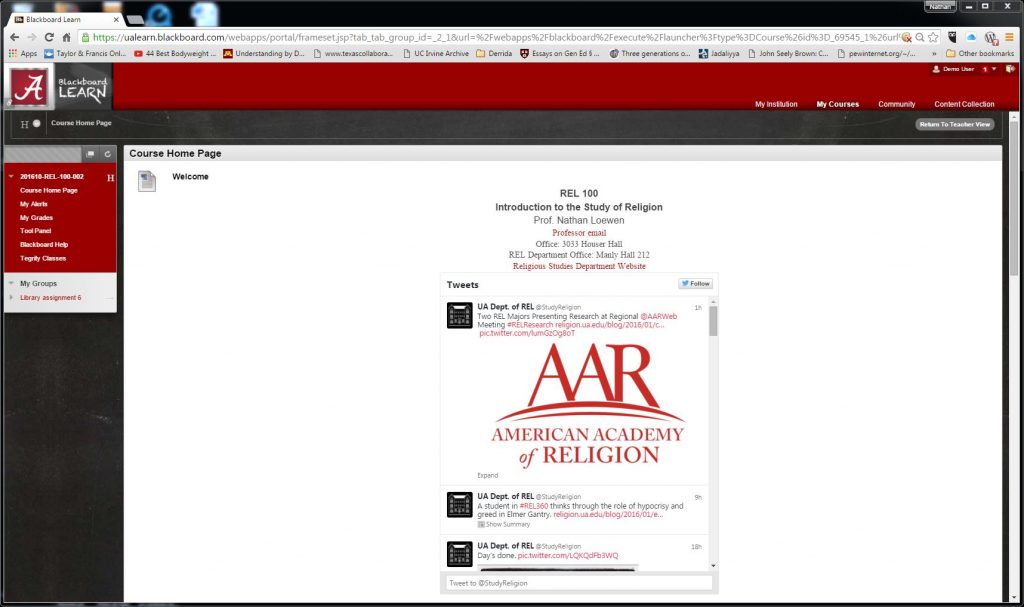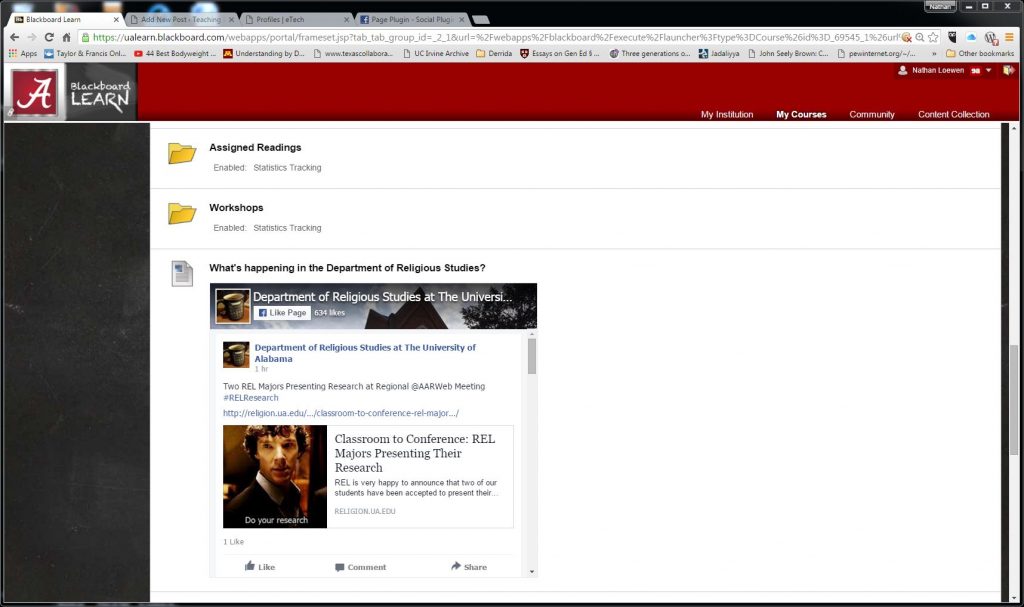by Nathan Loewen, Department of Religious Studies
Do you use Blackboard in your course? I do. Here’s why: I think it’s easier for me, as well as the students, to have a simple, one-stop place to find and do everything related to a course outside of class. Now beginning my second year of teaching at UA, I find my commitment to grasping the basic features of Blackboard has made my teaching much more manageable. Furthermore, as faculty technology liaison for the College of Arts and Sciences, I think it incumbent upon me to figure out how to make the most of whatever tools are available to the folks teaching in my College.
Perhaps I am a so-called “power-user”? I use Blackboard in order to
- Display the syllabus and course calendar.
- Provide additional readings.
- Post all assignments and related items (e.g., rubrics).
- Circulate important announcements (e.g., room changes). These are pushed out to students’ myBama emails, too!
- Post regular content quizzes. I make mine available after class until midnight, where students answer 10 questions about course content in 15 minutes. I also provide feedback for incorrect answers.
- Display a grade book for all evaluations. I include a column that calculates current averages in real-time (really useful for entering mid-term grades!)
I am also interested in integrating hacks if they help me achieve my overall and course-specific learning objectives.
One of my regular Blackboard practices has been, until now, rather labor-intensive. I want students to see what is going on in my department when they log into my course. The Department of Religious Studies is very focused on students and creating opportunities for further learning and discussion about our faculty’s activities, how we approach the objects of our studies and the latest developments in the field. We do this via social media (e.g., Twitter, Facebook, Vimeo, WordPress, Instagram). Until now, having this on Blackboard has involved a lot of manual cutting and pasting into my course’s main page. But this is no longer the case!
I followed a few simple instructions and was able to put a real-time Twitter widget and Facebook page plugin on my Blackboard course main page. To be clear, this hack brings in a live feed that updates in real-time; nobody needs to have a social media account to use this!
Some important questions are raised by this hack since it does allow public-domain content to enter a secured site. I think this concern is answered if and only if the public-domain content is from a moderated source that is clearly connected to one’s own institution, such as departmental social media, or to a peer-reviewed or professionally moderated source.
Here are screen-shots of the department Twitter and Facebook feeds:


So, how do you use Blackboard? Do you have any applications, tricks, or hacks to share?